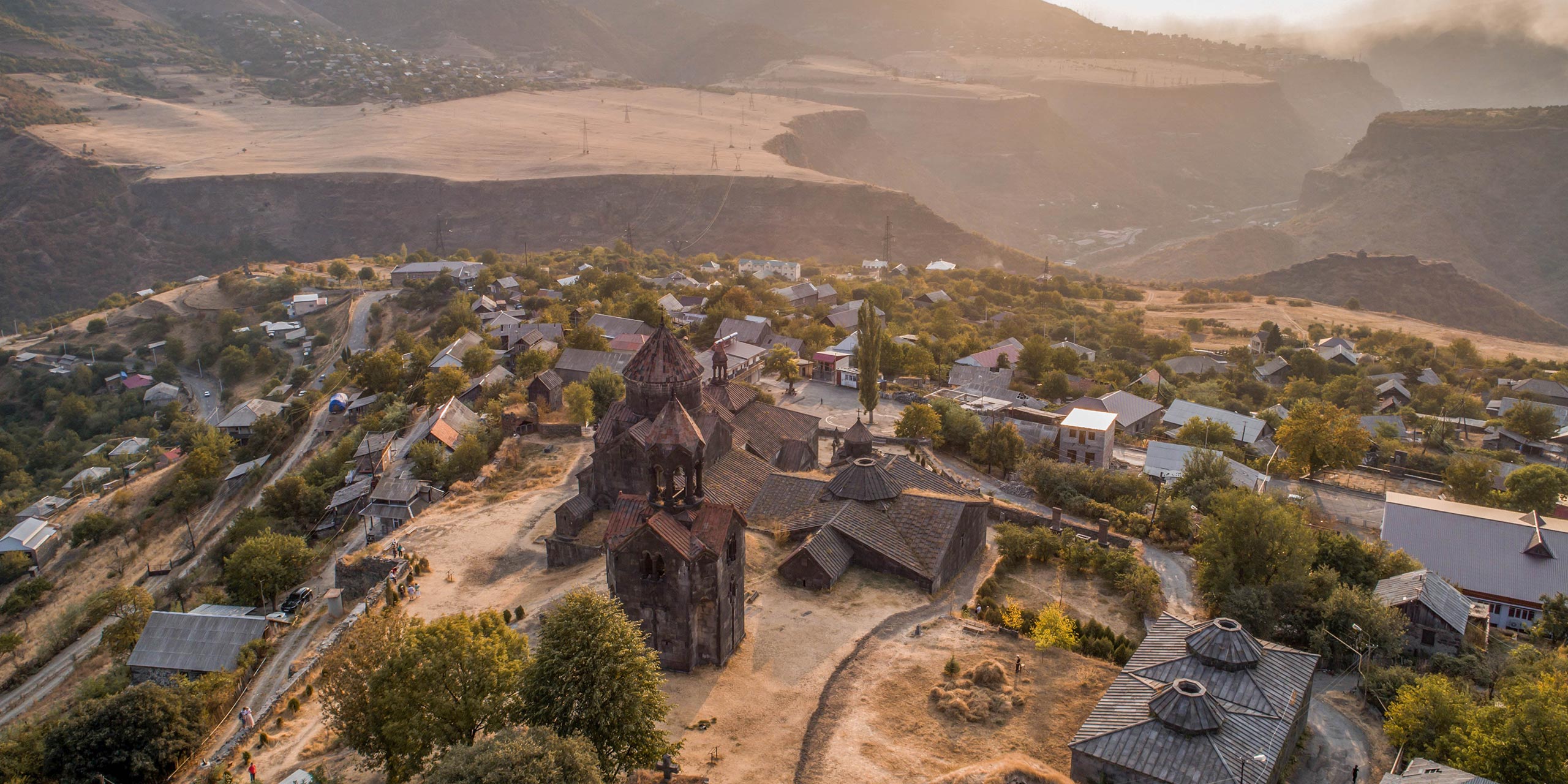
Tiny Armenia is one of Eurasia’s legendary enclaves. It was the first nation to adopt Christianity as the state religion in A.D. 301 and is notable for its rugged mountainous terrain and wildflower-dappled valleys. Tucked deep into these emerald canyons and perched atop craggy hilltops are Armenia’s early Christian structures—majestic complexes that bear testimony to the creative power of one of the world’s oldest civilizations. Armenia’s religious past is also manifested in pagan temples and monasteries, immaculately preserved for over a millennium. Armenian churches are markedly different from other European churches, with a signature architectural style steeped in legends and folklore.
Khor Virap
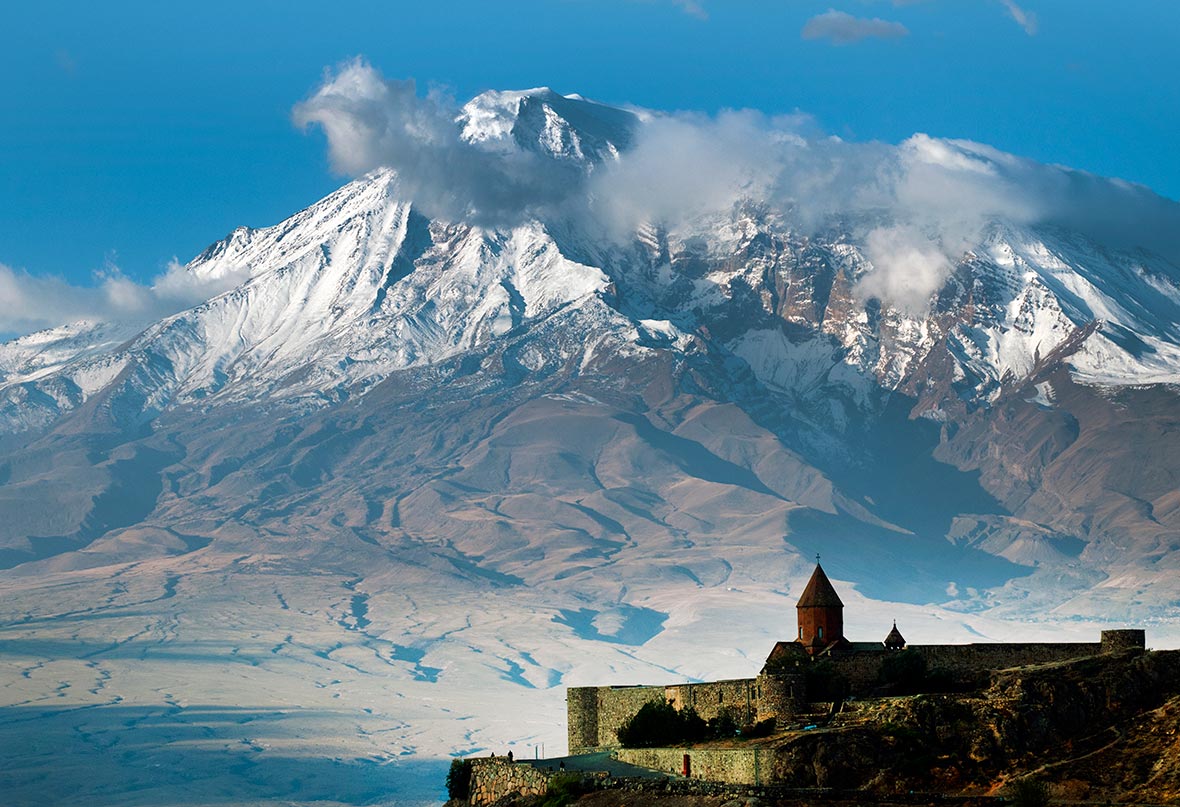
Khor Virap monastery stands on a hillock amid the expansive Ararat plains near the Turko-Armenian border. Commanding beautiful views of the snow-capped Mt. Ararat massif, Khor Virap dates back to pre-Christian times when it was a prison that held Grigor Lusavorich, the patron saint of Armenia, in a subterranean pit for 13 years. The story goes that Lusavorich cured King Tiridates III, the Armenian monarch, of a fatal disease and subsequently converted him to Christianity. Soon after, the kingdom became the first officially Christian nation in the world. Lusavorich was sainted as Gregory the Illuminator and Khor Virap — which took its current incarnation in the 17th century — has remained the most visited sacred pilgrimage site of Armenia. The dungeon can be reached by a 200-ft descent by a ladder.
Zvartnots Cathedral
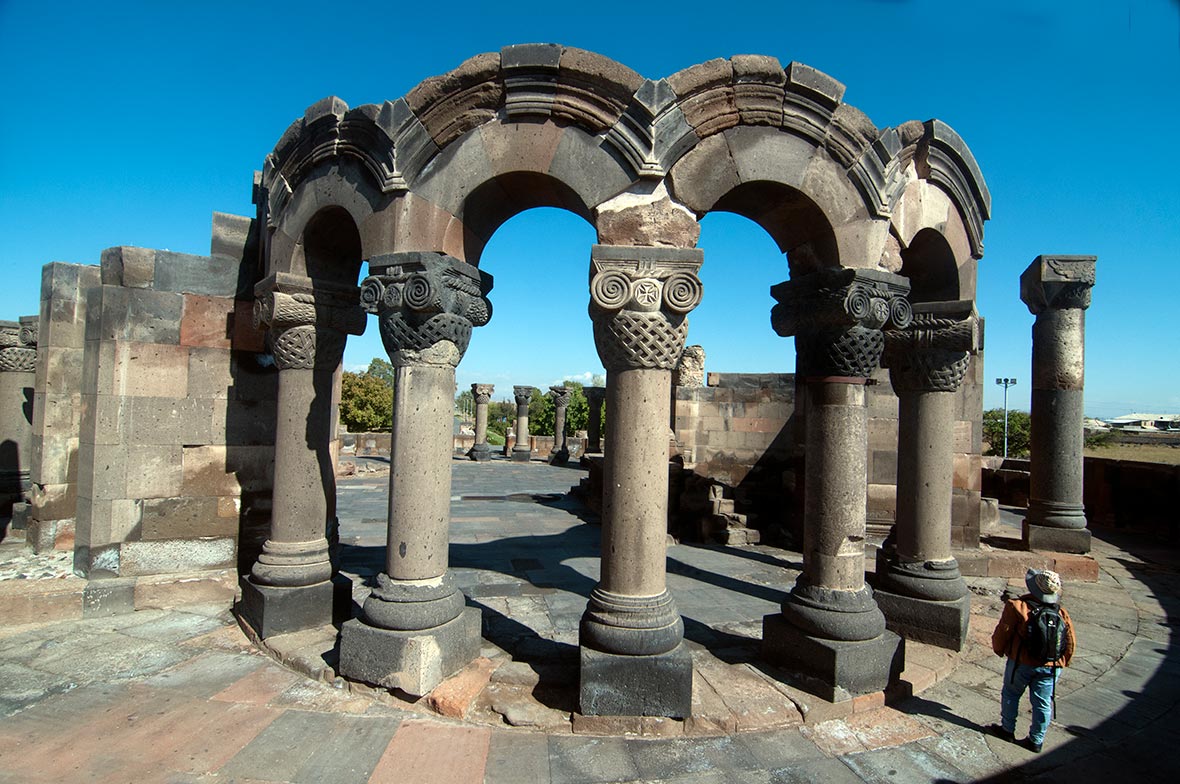
Zvartnots remains one of the finest examples of Armenian religious architecture, where unique constructive techniques were used to build a tetra-conch church. According to Armenian historians, this is where St. Gregory converted King Tiridates III to Christianity. The early Christian cathedral, consecrated in 652 A.D., stood as one of the world’s tallest structures at 45meters for 320 years before its collapse in the 10th century. The reason for its destruction is still contested: it could have been a result of a devastating earthquake or Arab invasions. The cathedral was listed in 2000 as a UNESCO World Heritage site and is best visited early in the morning when there is a better chance of a clear view of Mt. Ararat forming a stunning backdrop.
Etchmiadzin Cathedral
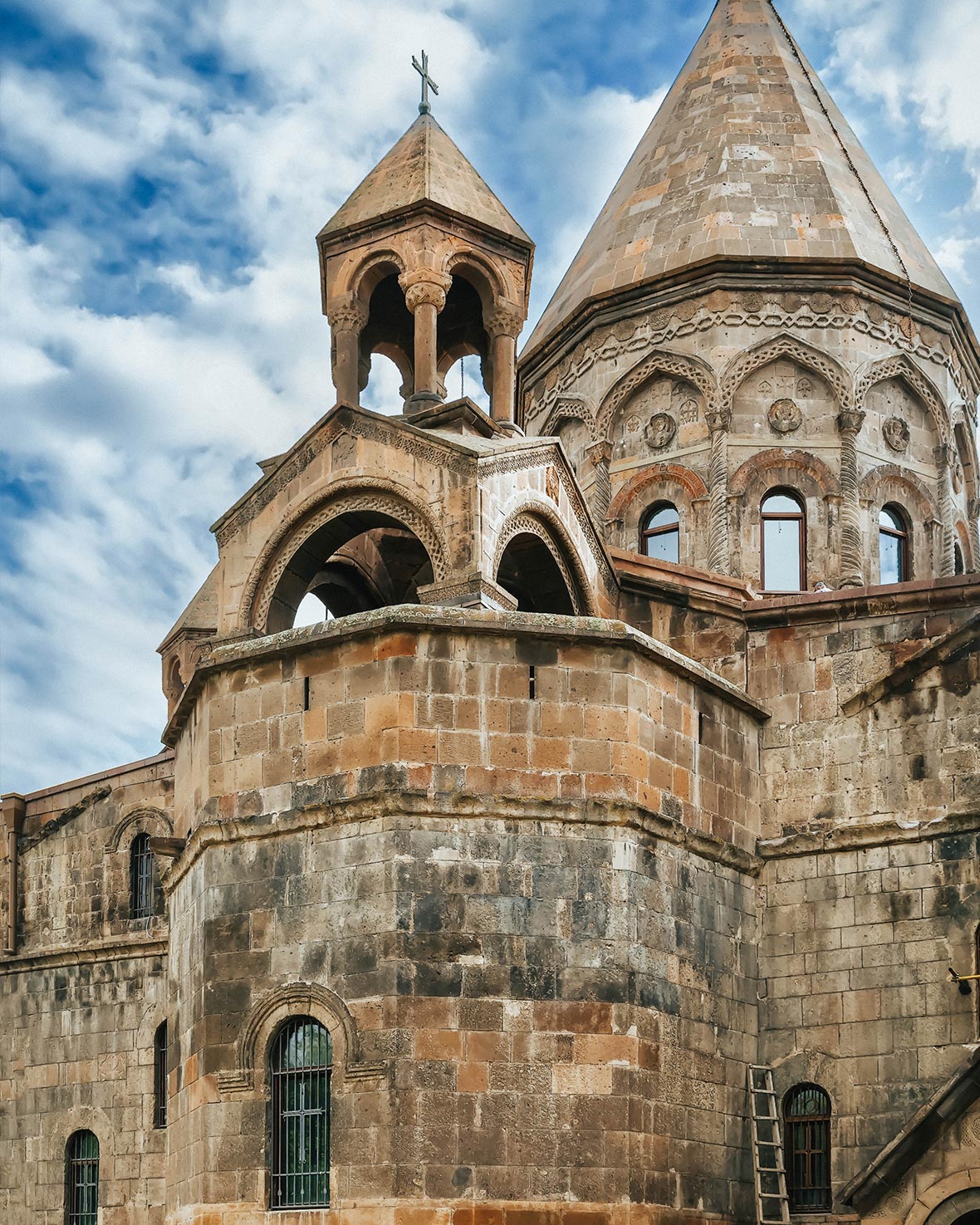
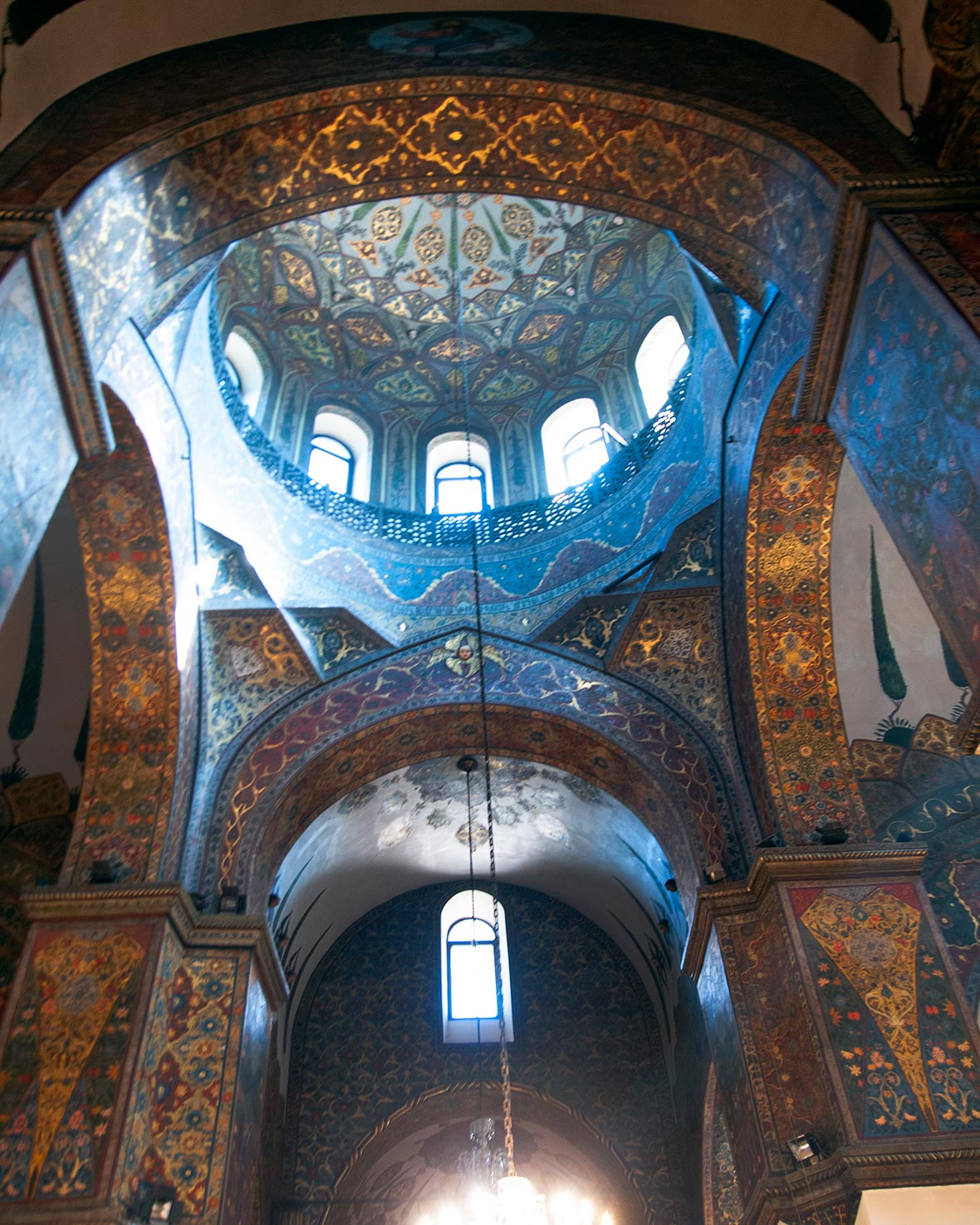
The mother church of the Armenian Apostolic Church, Etchmiadzin Cathedral is located in the city of Vagharshapat. It is widely believed to be the world’s oldest Christian cathedral. The area surrounding Etchmiadzin Cathedral has been inhabited since prehistoric times, and archaeological sites from the iron, stone, and bronze ages have been excavated near the cathedral. As a result of renovations and restorations through the centuries, the cathedral’s facade is a symphony of architectural and artistic styles with Syrian and Persian influences. The Museum of Echmiadzin, opened in 1955, holds the sacred relics of the church. Some of them are astounding artifacts. Highlights include the Holy Lance (the spear with which Christ’s was pierced), a fragment of Noah’s Ark, and a piece of the wooden cross on which Christ was crucified.
Sevanavank
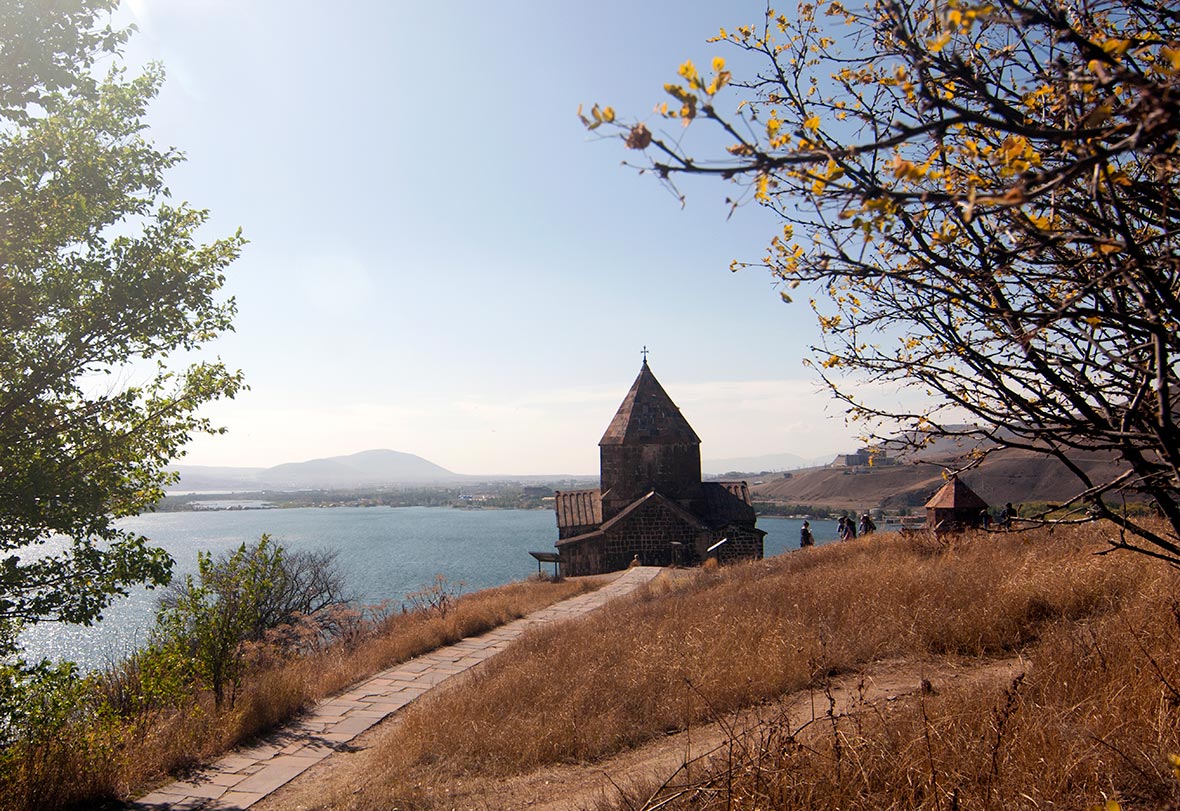
Perched at an altitude of 2000 meters and ringed by the turquoise waters of serene Lake Sevan, the largest freshwater lake in the entire Caucasus, Sevanavank is one of the earliest monasteries of Armenia. According to an inscription in one of the churches in the waterside complex, the monastery was founded in 874. The church buildings were constructed from black tuff, which probably gave the monastery its name Sevanavank: which translates as the Black Monastery.
Geghard
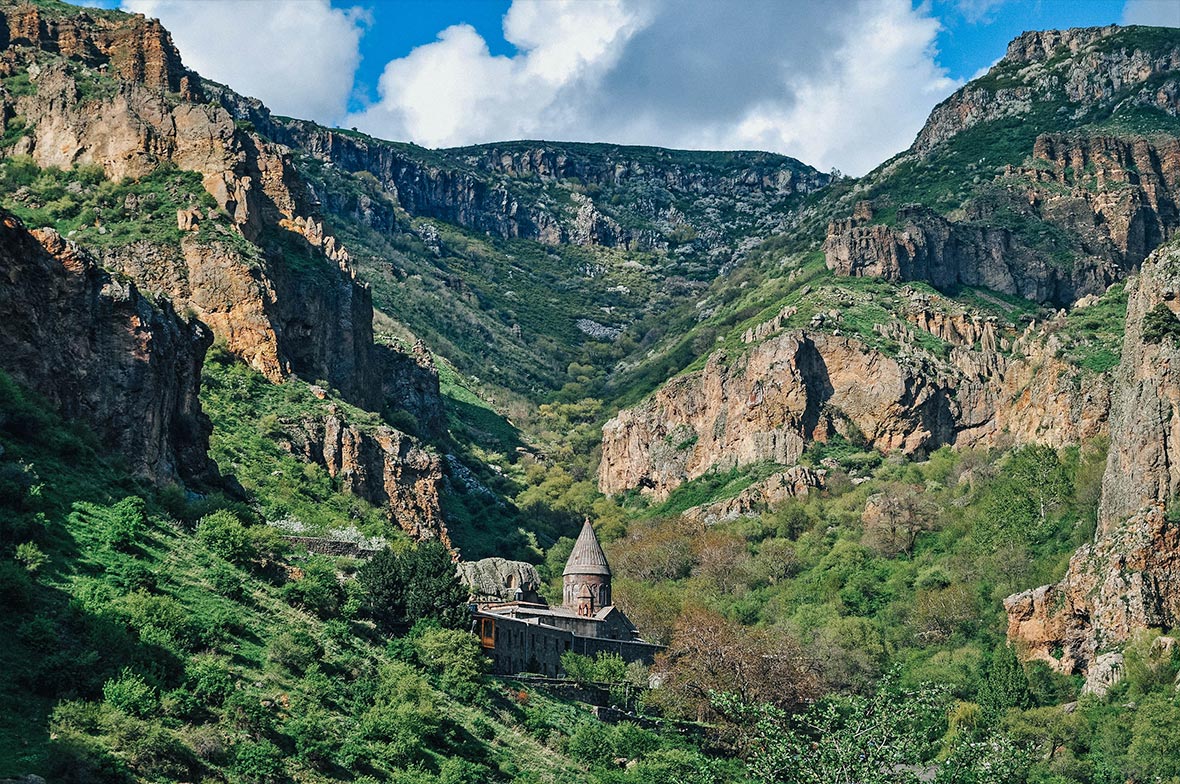
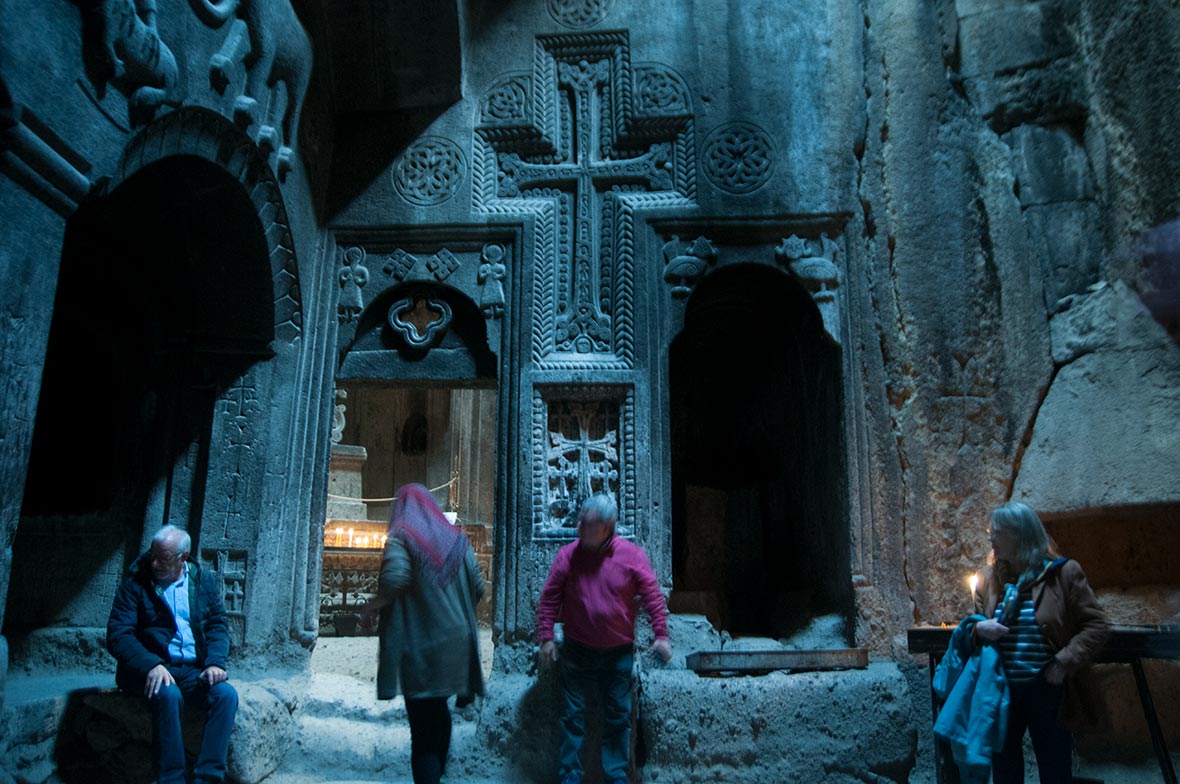
The sprawling Geghard monastery, another UNESCO World Heritage site, stands guard over the picturesque Azat Valley in central Armenia. Hewn into the towering cliffs surrounding the monastery, it was originally founded by St. Gregory in the 4th century at the site of a sacred spring inside a cave. The name commonly used for the monastery today, Geghard, or more fully Geghardavank means “Monastery of the Spear”, named after the spear used to stab Jesus Christ during the Crucifixion. It was brought to Armenia and housed inside Geghard monastery, and now stored in the treasury of Etchmiadzin Cathedral, the spiritual center of the Armenian Apostolic Church. Inside, the rock-cut chapel that dates back to 1215, the natural spring and its water still trickles by.
Noravank
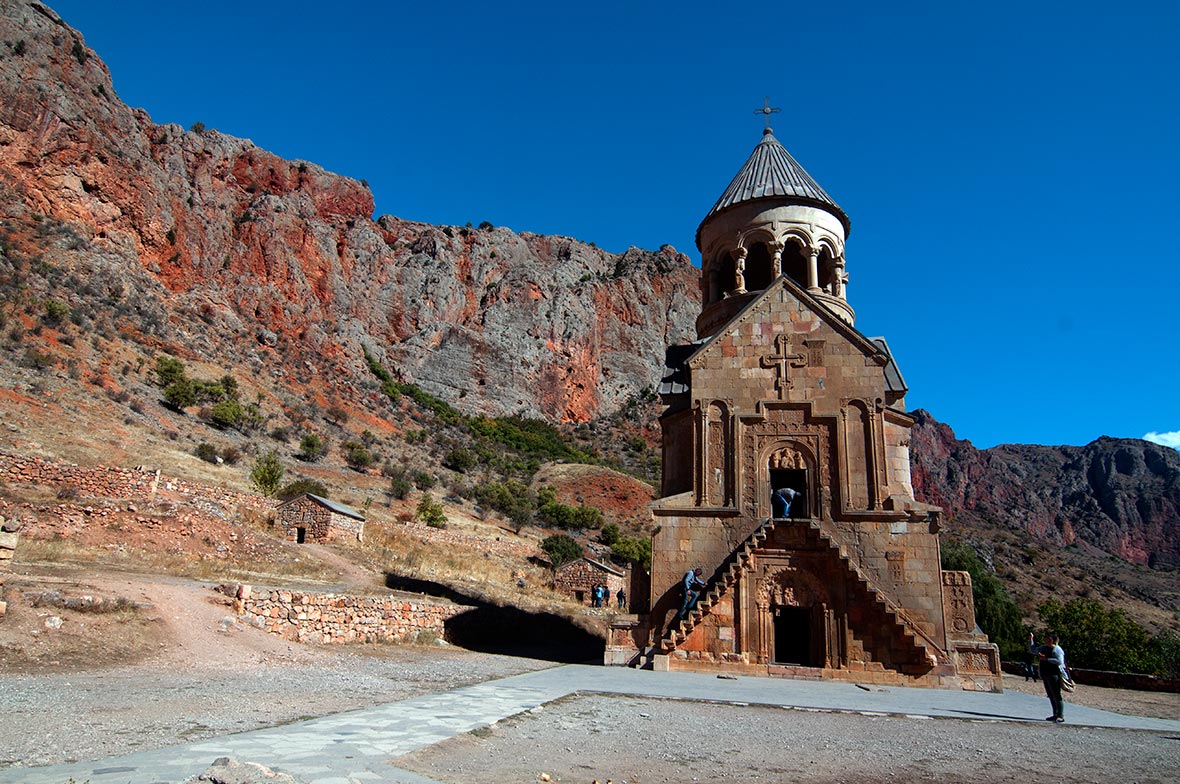
Hemmedby red-brick sheer limestone cliffs, within the deep and narrow gorge of River Amaghu, stands Noravank monastery. The double-storeyed monastery is best known for its upper-floor church, accessible by a dank stone staircase that protrudes from the façade of the 13th-century building – one of the earliest examples of cantilever architecture. The monastery complex was also a spiritual and cultural center of medieval Armenia, where some of Armenia’s most important medieval artists worked and were buried. According to legend, a piece of the True Cross, stained with the blood of Christ, was once hidden in the cavern complex.
Haghartsin
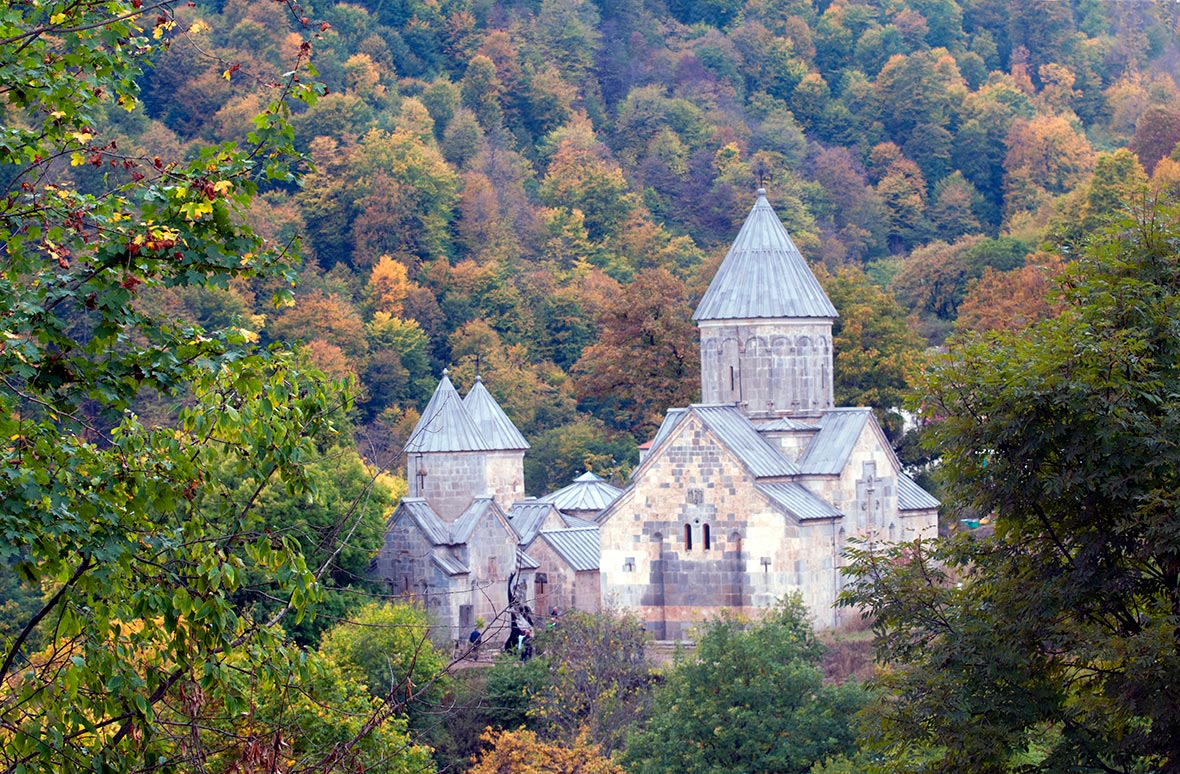
Located near the spa town of Dilijan in the Tavush Province, Haghartsin is a monastery built during the reign of the Bagratuni dynasty. The name Haghartsin means “games of eagles”, and the majestic bird can often be spotted in the woods that surround the monastery. The sprawling complex houses four churches built between the 11th and 13th centuries and two tsars of the Kyurikid dynasty lie interred near the southern wall of the St. Gregory church, the oldest among the four. Haghartsin’s cone-shaped dome on an octahedral drum looks spectacular especially in late fall when the surrounding forest is resplendent in orange and yellow foliage. The ruins of the medieval village of Haghartsin lie 2 km. away.
Haghpat
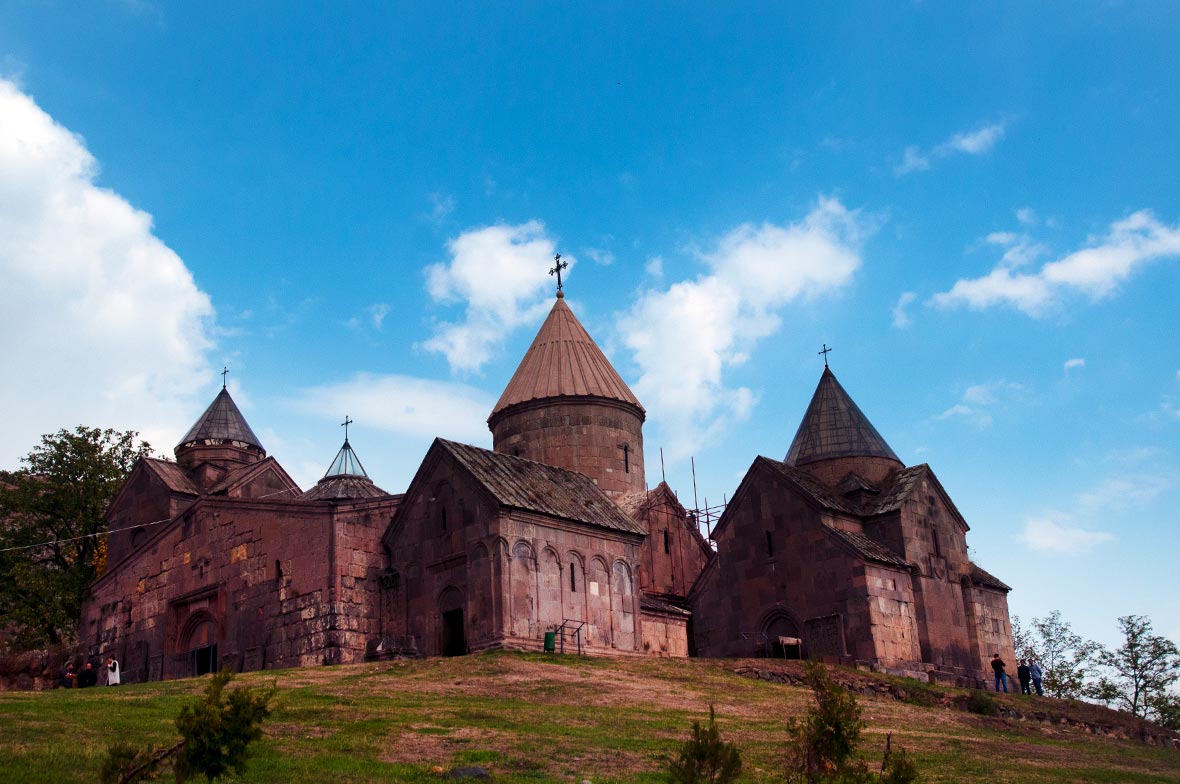
The medieval Haghpat monastery complex was built on the lip of the Debed canyon between the 10th and 13th centuries. The cluster of temples forms an integrally interconnected motif striking an architectural balance and design that would survive an earthquake, and bears brilliant testament to the creativity of Armenian architecture. In its earliest stage, Haghpat was a center of copying ancient manuscripts and had a huge book depository. Much of its interiors have remained intact including the food storage area, 13th-century grindstones, and a community eating space for the monks. Several ornate khachkars (cross-stones) with intricate and dainty carvings enhance the beauty of this historical complex.
Garni
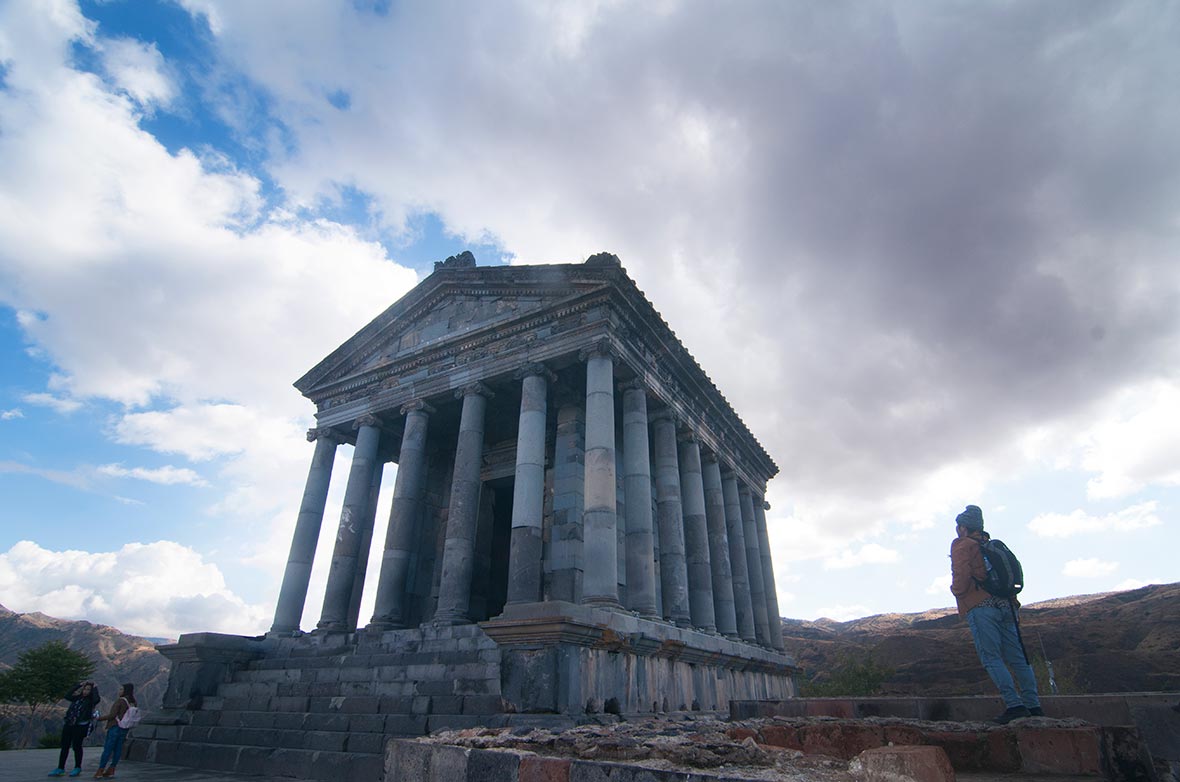
The best-known symbol of pre-Christian Armenia, Garni was a Hellenistic temple dedicated to the Sun God Mihr. The temple was part of a royal garrison and military citadel built by King Tiridates I in the first century A.D. The colonnaded monument stands on the edge of a cliff overlooking the ravine of Azat River, at a distance of 26 km. from Yerevan. The temple is the only remaining example of Greco-Roman architectural style in Armenia and the whole of the erstwhile Soviet Union. After Armenia’s conversion to Christianity, Garni served as the summer palace of Khosrovidukht, King Tiridates III’s sister.
